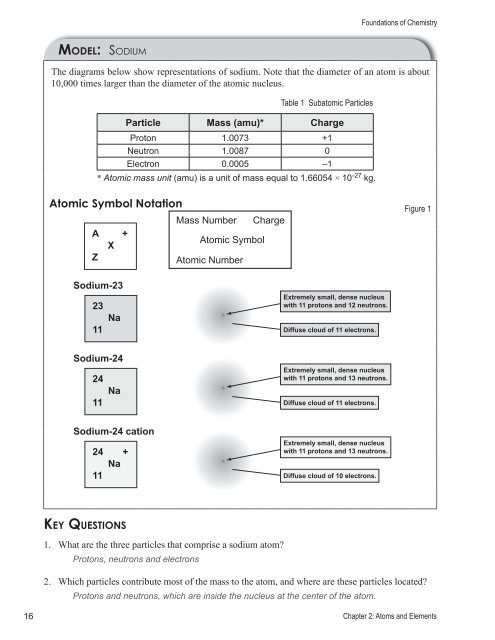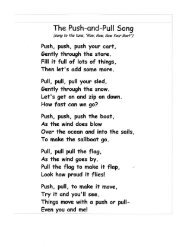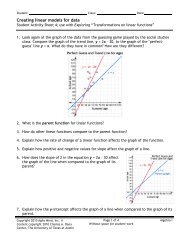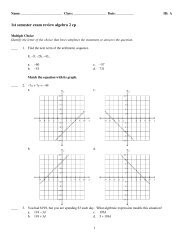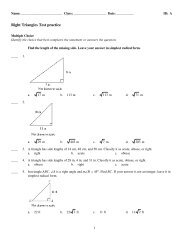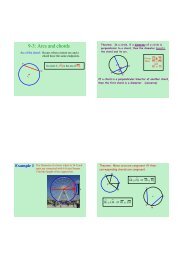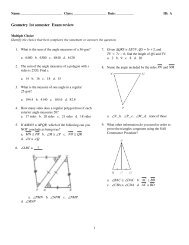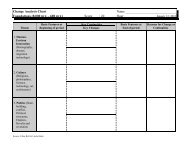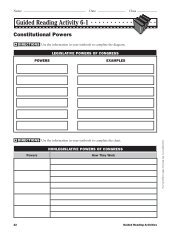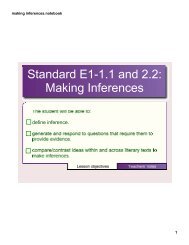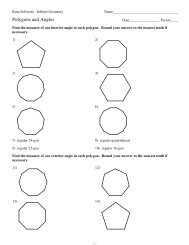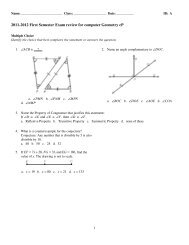Create successful ePaper yourself
Turn your PDF publications into a flip-book with our unique Google optimized e-Paper software.
Foundations of Chemistry<br />
MODEL: SODIUM<br />
The diagrams below show representations of sodium. Note that the diameter of an atom is about<br />
10,000 times larger than the diameter of the atomic nucleus.<br />
Table 1 Subatomic Particles<br />
Particle Mass (amu)* Charge<br />
Proton 1.0073 +1<br />
Neutron 1.0087 0<br />
Electron 0.0005 –1<br />
* Atomic mass unit (amu) is a unit of mass equal to 1.66054 × 10 –27 kg.<br />
Atomic Symbol Notation<br />
A +<br />
X<br />
Z<br />
Mass Number<br />
Atomic Symbol<br />
Atomic Number<br />
Charge<br />
Figure 1<br />
Sodium-23<br />
23<br />
Na<br />
11<br />
Extremely small, dense nucleus<br />
with 11 protons <strong>and</strong> 12 neutrons.<br />
Diffuse cloud of 11 electrons.<br />
Sodium-24<br />
24<br />
Na<br />
11<br />
Extremely small, dense nucleus<br />
with 11 protons <strong>and</strong> 13 neutrons.<br />
Diffuse cloud of 11 electrons.<br />
Sodium-24 cation<br />
24 +<br />
Na<br />
11<br />
Extremely small, dense nucleus<br />
with 11 protons <strong>and</strong> 13 neutrons.<br />
Diffuse cloud of 10 electrons.<br />
KEY QUESTIONS<br />
1. What are the three particles that comprise a sodium atom?<br />
Protons, neutrons <strong>and</strong> electrons<br />
2. Which particles contribute most of the mass to the atom, <strong>and</strong> where are these particles located?<br />
Protons <strong>and</strong> neutrons, which are inside the nucleus at the center of the atom.<br />
16<br />
Chapter 2: <strong>Atoms</strong> <strong>and</strong> Elements


